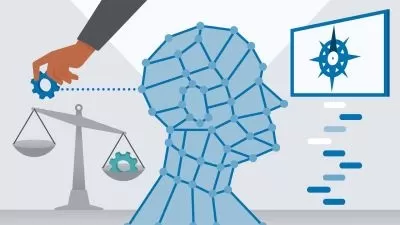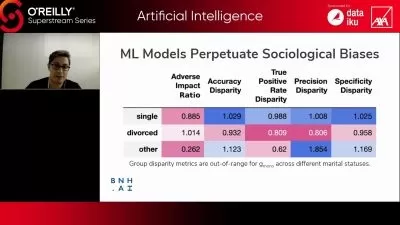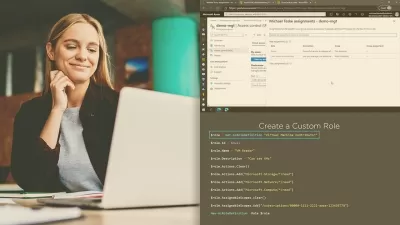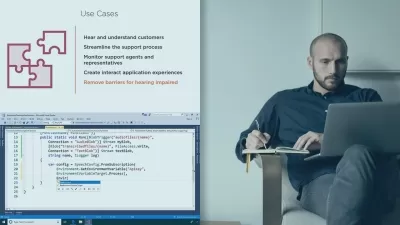Basics to Advanced: Azure Synapse Analytics Hands-On Project
Shanmukh Sattiraju
18:39:55
Description
Build complete project only with Azure Synapse Analytics focused on PySpark includes delta lake and spark Optimizations
What You'll Learn?
- Understand Azure Synapse Analytics Services Practically
- Complete basic to advanced understanding on Azure Synapse Analytics
- Gain hands-on experience in applying Spark optimization techniques to real-world scenarios, achieving faster insights.
- Understand 50+ most commonly used PySpark Transformations
- Acquire a comprehensive library of 45+ PySpark notebooks for data cleansing, enrichment, and transformation.
- Hands-on learning on building a modern data warehouse using Azure Synapse
- Explore the capabilities of Spark Pools and their role in processing large-scale data workloads
- Understand how python is used in Data Engineering
- Understand and transform data with Serverless SQL pool
- Understand the principles and advantages of Delta Lake as a reliable data storage and management solution.
- Explore the capabilities of Spark Pools and their role in processing large-scale data workloads
- Learn How Spark is evolved and its growth
- Provides insights on services that needed to clear DP-203
- Create and configure a Serverless SQL pool
- Create External DataSource, External Files, External Tables in Serverless SQL pool
- Configure Spark Pools and understand the working of them
- Explore the capabilities of Spark Pools and their role in processing large-scale data workloads
- Understand the Integration of Power BI with Azure Synapse Analytics
- Explore the capabilities of Spark Pools and their role in processing large-scale data workloads
- Create and work with Dedicated SQL pool on a high level
- Optimize your PySpark with Spark Optimization techniques
- Learn history and data processing before Spark
- Implement the incremental UPSERT using Delta Lake
- Understand and implement versioning in delta lake
- Implement MSSpark Utils and the uses of its utilities
- How we can mount Data lake to Synapse Notebooks
Who is this for?
What You Need to Know?
More details
DescriptionAre you ready to revolutionize your data analytics skills? Look no further. Welcome to our comprehensive course, where you'll delve deep into the world of Azure Synapse Analytics with PySpark and emerge equipped with the tools to excel in modern data analysis.
Unlock the Power of Azure Synapse Analytics!
18.5+ HOURS OF IN-DEPTH LEARNING CONTENT!
In this course we will be learning about :
Serverless SQL Pool - Perform flexible querying for structured and initial data exploration
Spark Pools - Dive into advanced data processing and analytics with the power of Apache Spark.
Spark SQL - Seamlessly query structured data using Spark's SQL capabilities.
MSSpark Utils - Leverage MSSpark Utilities for enhanced Spark functionalities for Synapse/
50+ PySpark Transformations - Harness over 50 PySpark transformations to manipulate and refine your data.
Dedicated SQL Pool - To report data efficiently to Power BI.
Integrating Power BI with Azure Synapse Analytics - Seamlessly connect Power BI for enriched data visualization and insights.
Delta Lake and its features - Integrate Delta Lake for reliable, ACID-compliant data.
Spark Optimization Techniques - Employ optimization techniques to enhance Spark processing speed and efficiency.
You will also learn how python is helpful in data analysis. Our project-based approach ensures hands-on learning, giving you the practical experience needed to conquer real-world data challenges.
While this course not completely focuses on certification you can also learn the practical understanding about Azure Synapse analytics service that is needed to pass DP-203 - "Microsoft Certified Azure Data Engineer" and DP-500 "Designing and Implementing Enterprise-Scale Analytics Solutions Using Microsoft Azure and Microsoft Power BI"
Join with me in mastering Azure Synapse Analytics !
Who this course is for:
- Beginners who want to step into the world of Data Engineers
- Professional Data Engineers who want to advance their data analysis skills
- Students who are keen to learn Data Analytics
- Data Engineers who want to learn data warehousing in Cloud using Azure Synapse Analytics
Are you ready to revolutionize your data analytics skills? Look no further. Welcome to our comprehensive course, where you'll delve deep into the world of Azure Synapse Analytics with PySpark and emerge equipped with the tools to excel in modern data analysis.
Unlock the Power of Azure Synapse Analytics!
18.5+ HOURS OF IN-DEPTH LEARNING CONTENT!
In this course we will be learning about :
Serverless SQL Pool - Perform flexible querying for structured and initial data exploration
Spark Pools - Dive into advanced data processing and analytics with the power of Apache Spark.
Spark SQL - Seamlessly query structured data using Spark's SQL capabilities.
MSSpark Utils - Leverage MSSpark Utilities for enhanced Spark functionalities for Synapse/
50+ PySpark Transformations - Harness over 50 PySpark transformations to manipulate and refine your data.
Dedicated SQL Pool - To report data efficiently to Power BI.
Integrating Power BI with Azure Synapse Analytics - Seamlessly connect Power BI for enriched data visualization and insights.
Delta Lake and its features - Integrate Delta Lake for reliable, ACID-compliant data.
Spark Optimization Techniques - Employ optimization techniques to enhance Spark processing speed and efficiency.
You will also learn how python is helpful in data analysis. Our project-based approach ensures hands-on learning, giving you the practical experience needed to conquer real-world data challenges.
While this course not completely focuses on certification you can also learn the practical understanding about Azure Synapse analytics service that is needed to pass DP-203 - "Microsoft Certified Azure Data Engineer" and DP-500 "Designing and Implementing Enterprise-Scale Analytics Solutions Using Microsoft Azure and Microsoft Power BI"
Join with me in mastering Azure Synapse Analytics !
Who this course is for:
- Beginners who want to step into the world of Data Engineers
- Professional Data Engineers who want to advance their data analysis skills
- Students who are keen to learn Data Analytics
- Data Engineers who want to learn data warehousing in Cloud using Azure Synapse Analytics
User Reviews
Rating
Shanmukh Sattiraju
Instructor's Courses
Udemy
View courses Udemy- language english
- Training sessions 190
- duration 18:39:55
- Release Date 2023/10/04
















